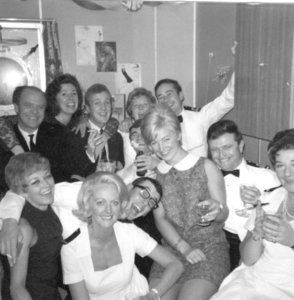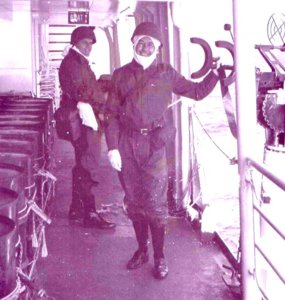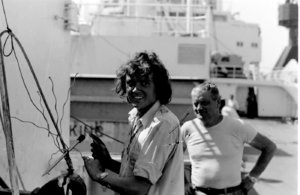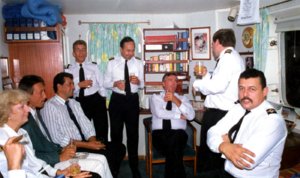The common assumption on the part of the general public is that we either drink or play cards!

In actual fact, in the merchant navy I sailed in between early 1961 and late 1992, the hours were long because merchant ships only have a fraction of the crew that a warship carries. In calm weather, there is an endless round of maintenance, chipping, painting, checking wires and rigging, holystoning decks, and watchkeeping for the officers. This went on every day, and weekends, public holidays etc were all the same, so that we would often not even know what day of the week it was unless we checked the calendar. For those keeping watches, there was the 0000-0400, 0400-0800,0800-1200, 1200-1600, 1600-2000 and 2000-0000. (Four hours on watch, eight hours off) Those off watch were expected to work as required when necessity arose, which was quite often. There was also some unwritten rule that the senior watchkeeper of each department, who kept to 0400-0800 and 1600-2000 watches, was bone idle unless they assisted in other work between 0800 and 1200 (after already having done 4 hours on watch.

) In the days of sail, most of the officers and crew kept two watches, four hours on, four hours off, as long as the ship was at sea, whereas the few who were on daywork, bosun, carpenter, cook, steward, donkeyman, worked from about 0500 to about 1700 daily. In port there was continuous cargo work in both cargo ships and passenger liners. Bad weather could give some respite from work in steamships, when it was not safe to go on deck, but it made it infinitely harder in sailing ships when they had to. Here we are on the poop deck of the
St. Helena, the morning after a serious fire, stopped and listing, with an oil tanker standing by. I am in the centre in white unifrom, next to a stewardess. We had all been awake and desperately trying to save the ship (which we did) for 24 hours!

- All in a day's work! The other picture is the chief officer (left), 2nd officer (centre) and myself, right) at Ascension Island after we had been measuring the double bottom tanks, awash with water and oily mud, aboard the passenger liner
RMS St Helena. Another picture of a young seaman splicing wire under the eye of the bosun,
RMS Good Hope Castle. It was a very interesting and hard-working life in the merchant navy, and when wars did crop up (if you like that sort of thing), we were dragged in anyway (3rd image, captain left, myself right - Falklands, 1982).
We also had a good supply of female company as well -
Couldn't think of a better way to spend my working life - All gone now - modern ships - Ugghh!
Bob







 In actual fact, in the merchant navy I sailed in between early 1961 and late 1992, the hours were long because merchant ships only have a fraction of the crew that a warship carries. In calm weather, there is an endless round of maintenance, chipping, painting, checking wires and rigging, holystoning decks, and watchkeeping for the officers. This went on every day, and weekends, public holidays etc were all the same, so that we would often not even know what day of the week it was unless we checked the calendar. For those keeping watches, there was the 0000-0400, 0400-0800,0800-1200, 1200-1600, 1600-2000 and 2000-0000. (Four hours on watch, eight hours off) Those off watch were expected to work as required when necessity arose, which was quite often. There was also some unwritten rule that the senior watchkeeper of each department, who kept to 0400-0800 and 1600-2000 watches, was bone idle unless they assisted in other work between 0800 and 1200 (after already having done 4 hours on watch.
In actual fact, in the merchant navy I sailed in between early 1961 and late 1992, the hours were long because merchant ships only have a fraction of the crew that a warship carries. In calm weather, there is an endless round of maintenance, chipping, painting, checking wires and rigging, holystoning decks, and watchkeeping for the officers. This went on every day, and weekends, public holidays etc were all the same, so that we would often not even know what day of the week it was unless we checked the calendar. For those keeping watches, there was the 0000-0400, 0400-0800,0800-1200, 1200-1600, 1600-2000 and 2000-0000. (Four hours on watch, eight hours off) Those off watch were expected to work as required when necessity arose, which was quite often. There was also some unwritten rule that the senior watchkeeper of each department, who kept to 0400-0800 and 1600-2000 watches, was bone idle unless they assisted in other work between 0800 and 1200 (after already having done 4 hours on watch. 






